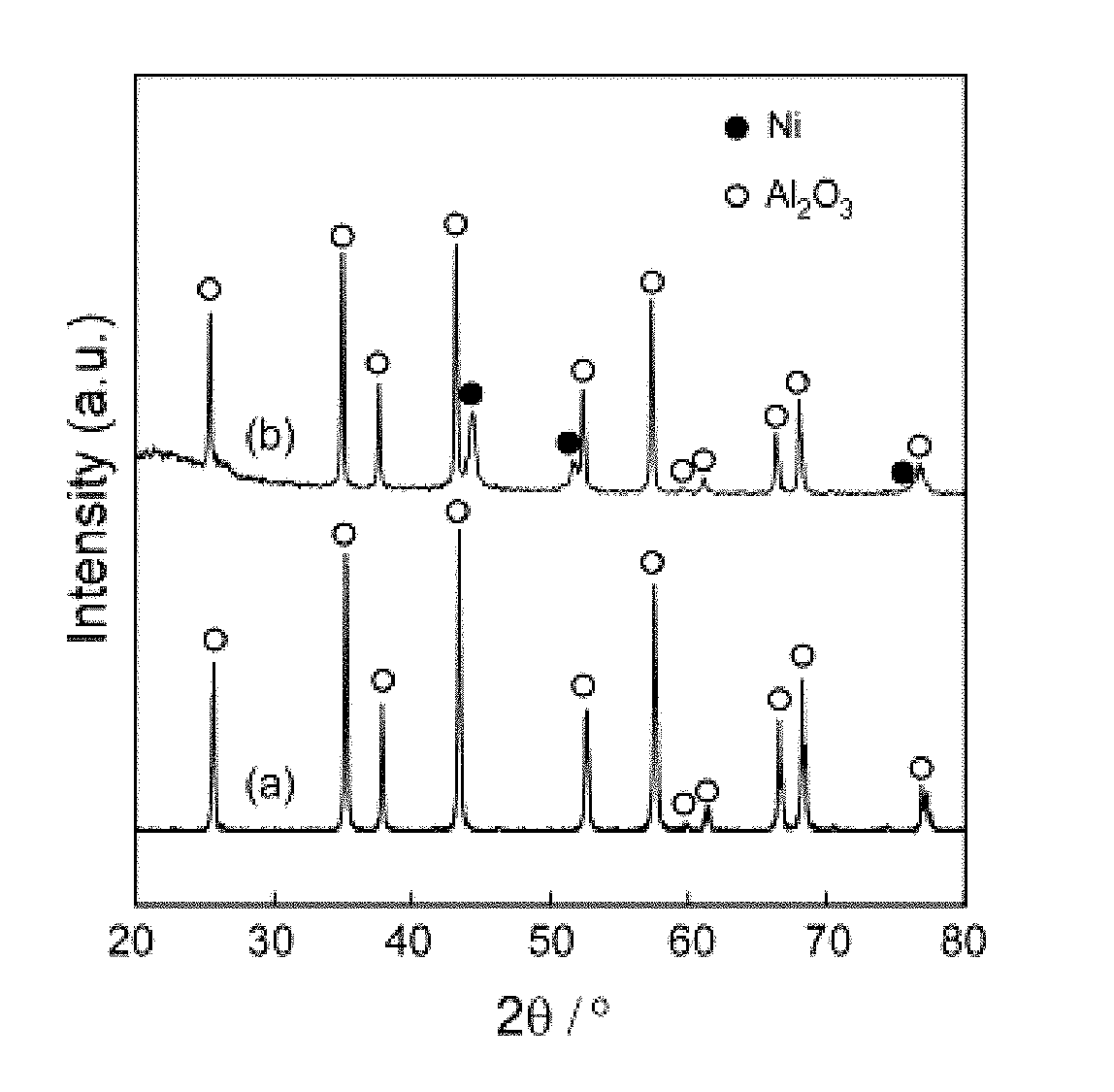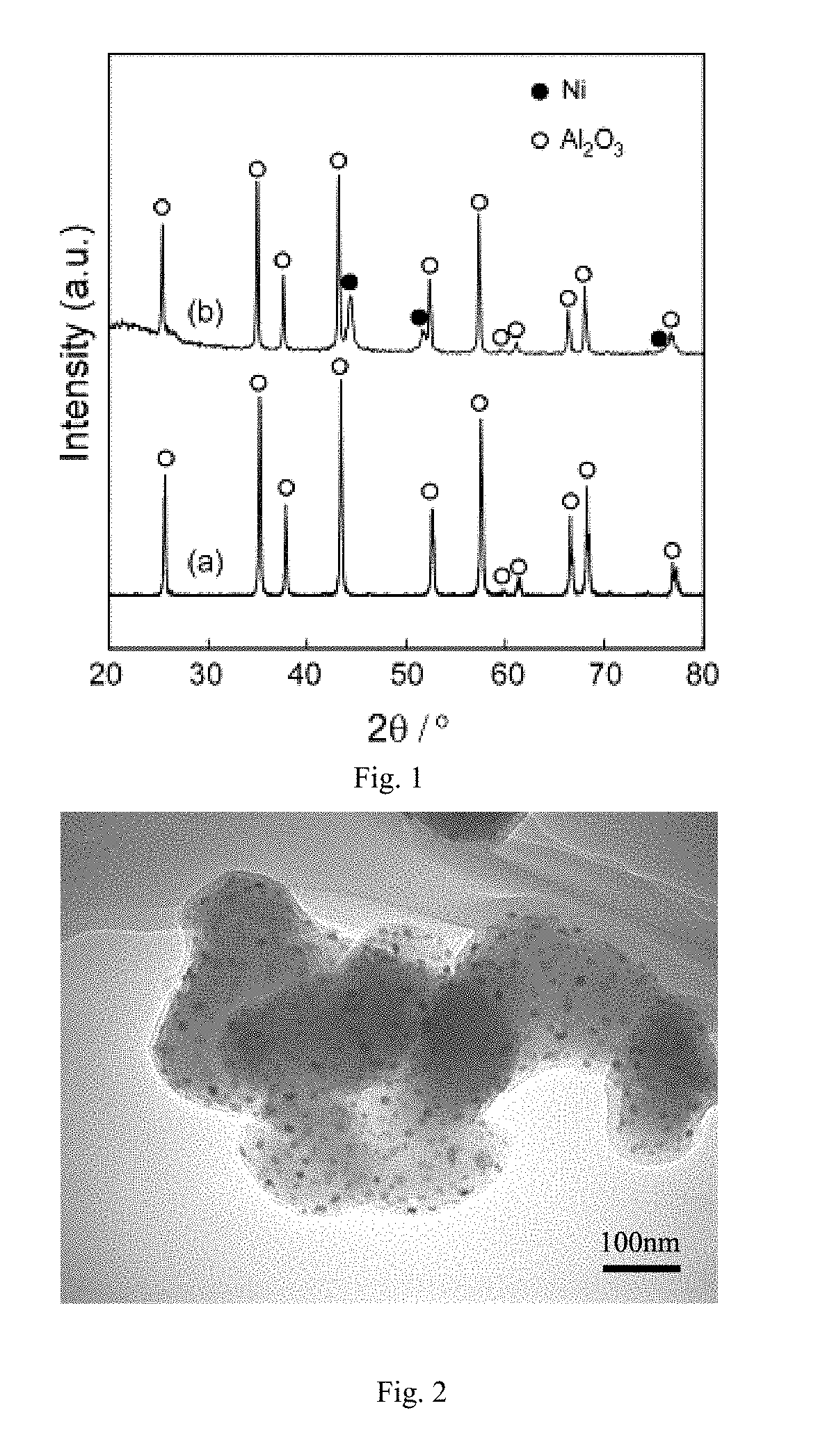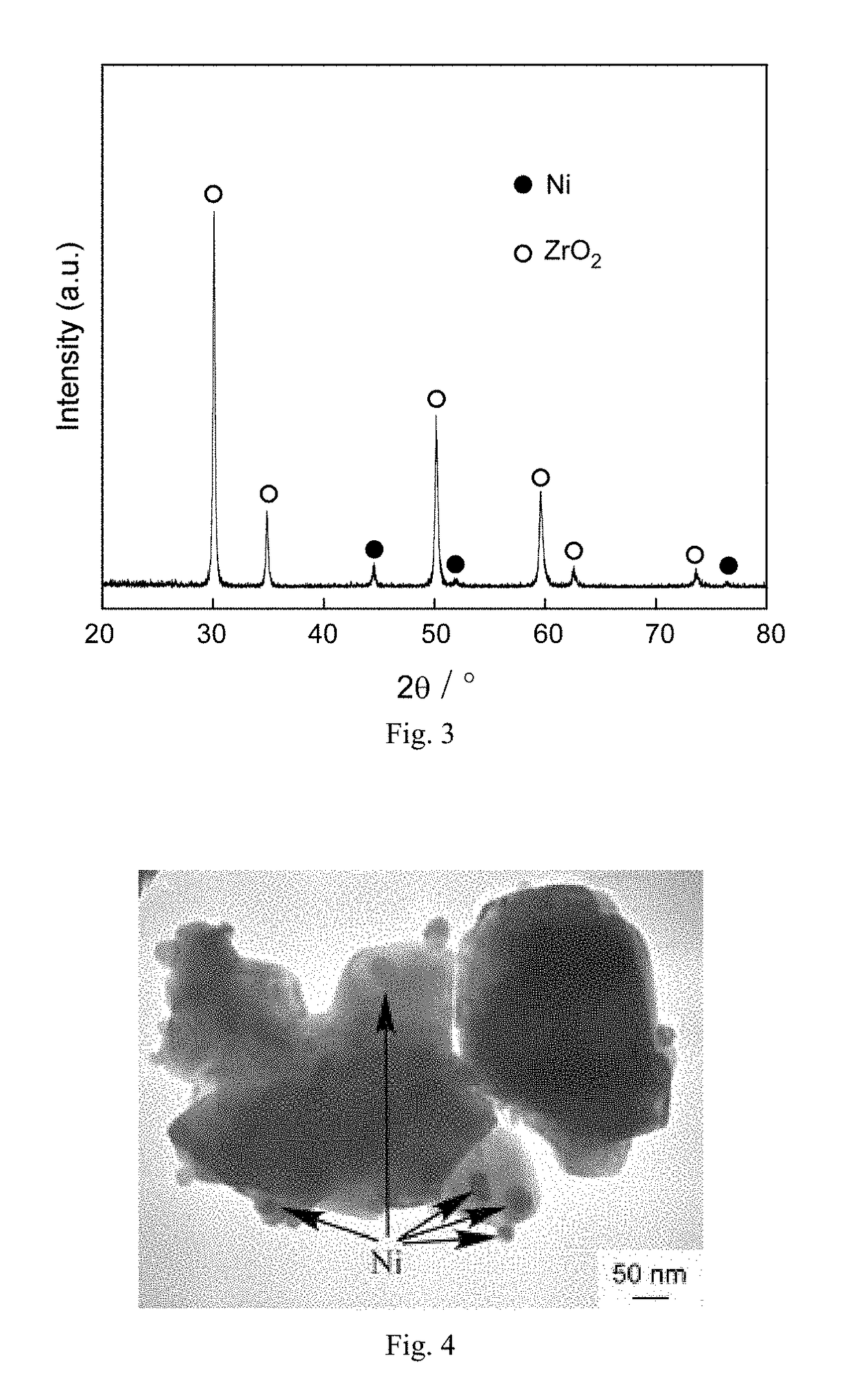Method for coating metal nanoparticles on oxide ceramic powder surface
a technology of oxide ceramic powder and metal nanoparticles, which is applied in the field of coating metal nanoparticles on oxide ceramic powder surfaces, can solve the problems of limited application range and difficulty in uniform mixing of powders with a larger difference in density properties, and achieve the effect of reducing coating temperature and increasing uniformity of dispersion
- Summary
- Abstract
- Description
- Claims
- Application Information
AI Technical Summary
Benefits of technology
Problems solved by technology
Method used
Image
Examples
embodiment 1
Coat Ni Nanoparticles on Al2O3 Powder Surface
[0024]Firstly, 5 g ordinary commercial Al2O3 powder (the particle size was 500 nm) and 0.5 g Ni(CO)4 were mixed firstly, put into a rotational reactor, and then the reactor was rotated at a rotational rate of 45 r / min. Mixed gas of oxygen and Ar was bubbled, wherein a total pressure of the mixed gas was 1000 Pa and a partial pressure of the oxygen was 100 Pa. The temperature was kept for 45 min after warming up to 450° C. at a heating rate of 8° C. / min, so that Ni(CO)4 was oxidized into nickel oxide, then an oxygen supply valve was closed, and carbonic oxide was bubbled to reduce the metal oxide (nickel oxide) into nanoparticles in a metallic state. A partial pressure of the carbonic oxide was 200 Pa, the reduction reaction time was 45 min, and then the temperature was cooled at a cooling rate of 8° C. / min. The gas valve was closed after the temperature was cooled to a room temperature, the rotation and heating of the reactor were stopped...
embodiment 6
Coat Co Nanoparticles on MgO Powder Surface
[0029]Taking a MgO powder surface coated with Co nanoparticles for example, 6 g ordinary commercial MgO powder (the particle size was 50 μm) and 2 g CoCp2 (Cobaltocene) were mixed firstly, put into a rotational reactor, and then the reactor was rotated at a rotational rate of 60 r / min. Mixed gas of oxygen and Ar was bubbled, wherein a total pressure of the mixed gas was 600 Pa and a partial pressure of the oxygen was 150 Pa. The temperature was kept for 20 min after warming up to 400° C. at a heating rate of 6° C. / min, so that CoCp2 was oxidized into cobaltous oxide, then an oxygen supply valve was closed, and methane was bubbled to reduce a metal oxide Co2O3 into nanoparticles in a metallic state. A partial pressure of the methane was 100 Pa, the reduction reaction time was 15 min, and then the temperature was cooled at a cooling rate of 10° C. / min. The gas valve was closed after the temperature was cooled to a room temperature, the rotati...
PUM
| Property | Measurement | Unit |
|---|---|---|
| particle size | aaaaa | aaaaa |
| partial pressure | aaaaa | aaaaa |
| partial pressure | aaaaa | aaaaa |
Abstract
Description
Claims
Application Information
 Login to View More
Login to View More - R&D
- Intellectual Property
- Life Sciences
- Materials
- Tech Scout
- Unparalleled Data Quality
- Higher Quality Content
- 60% Fewer Hallucinations
Browse by: Latest US Patents, China's latest patents, Technical Efficacy Thesaurus, Application Domain, Technology Topic, Popular Technical Reports.
© 2025 PatSnap. All rights reserved.Legal|Privacy policy|Modern Slavery Act Transparency Statement|Sitemap|About US| Contact US: help@patsnap.com



